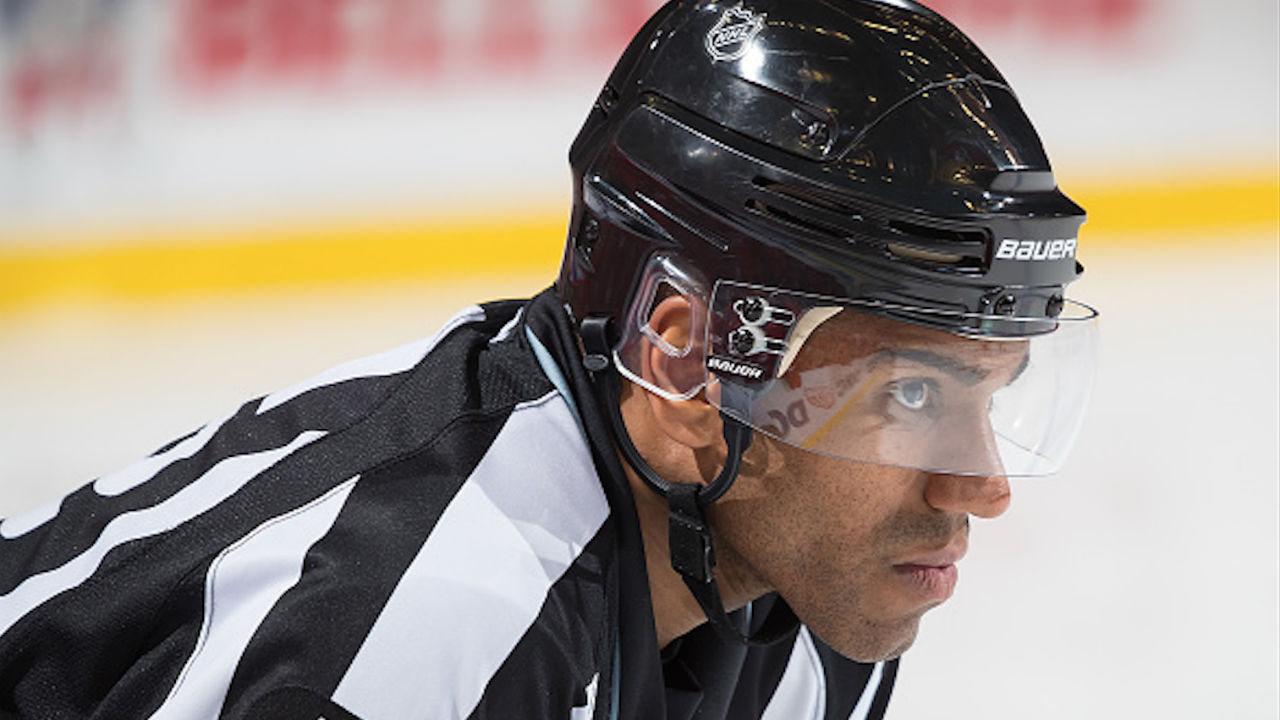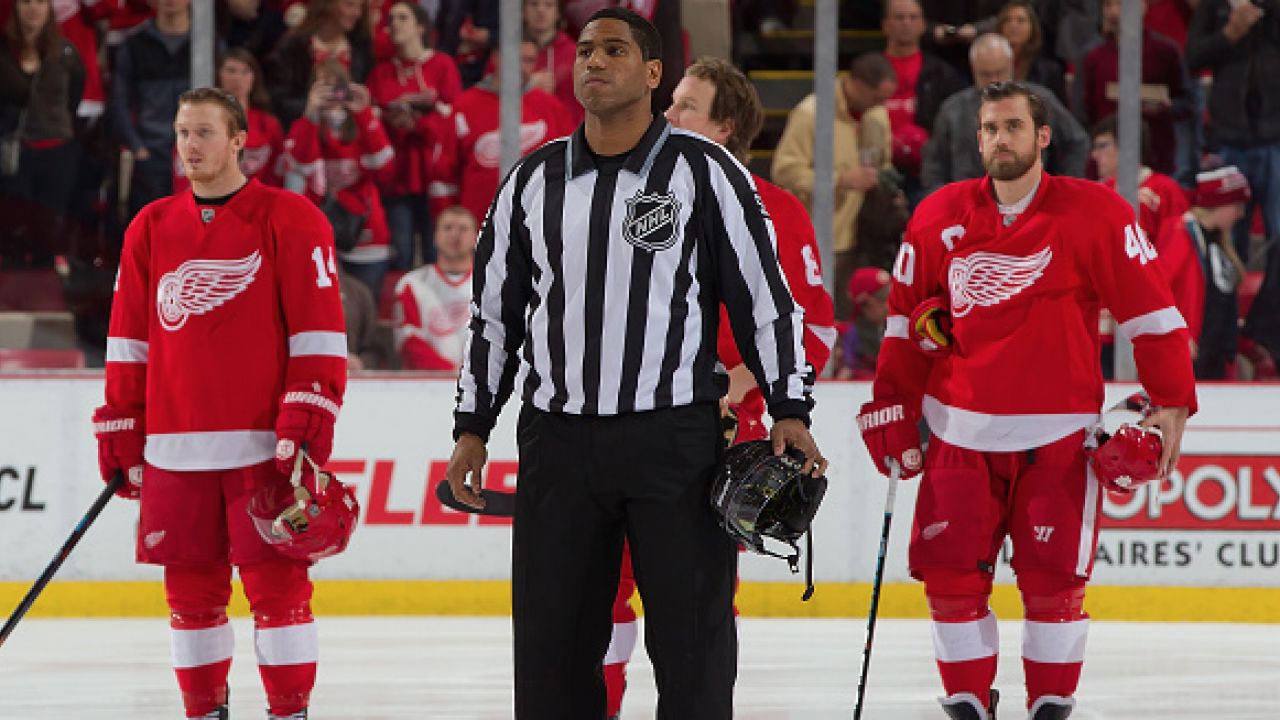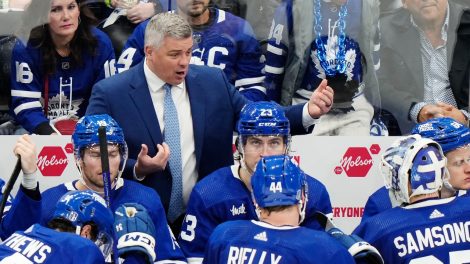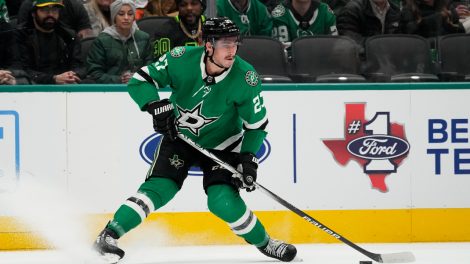Shandor Alphonso arrives at a mostly empty Air Canada Centre. It’s late March and he’s here for a late season game between the Detroit Red Wings and the Toronto Maple Leafs.
Hitting the ice for an Original Six matchup on Hockey Night in Canada has been a lifelong dream of his. The initial dream was to do so as player. But on this night, it’s playing out as an NHL linesman.
As I watched him pre-game turn the back-of-house hallways underneath the Air Canada Centre stands into his own personal aerobics studio, and stretch more intently than I’ve done almost anything, I realized there is nothing part-time about being an official. His workouts are so vigorous, he’s mistaken by arena employees for a player. A day earlier, a group of young fans had mistaken him for P.K. Subban.
The 34-year-old Alphonso is the NHL’s only active black official. It’s a fact not lost on him. He follows in the footsteps of Jamaica-born and British Columbia-raised Jay Sharrers, the NHL’s first black official. But Alphonso’s path to the NHL was a little different.
In 2010 during his senior season playing for Lakehead University, following a stint with the Sudbury Wolves of the Ontario Hockey League, Alphonso received an invitation from the NHL to participate in its Amateur Exposure Combine, an officiating camp designed to entice major junior, U.S. college and Canadian university hockey players to consider a career in officiating.
“When the dream ended to make the NHL, it was a tough pill to swallow,” says Alphonso. “I had the opportunity to continue playing pro hockey. I turned down a pro contract in the Central Hockey League.
“The NHL said to us: ‘Listen, If you’re good, you can get to the NHL in five years.’ I always had a dream.’”
A career in coaching was also a thought, but it didn’t fit his personality.
“I wanted to stay right in the game. I find (with) coaching, you’re there, but you’re not right in the mix of things,” he explains. “(Officiating) seemed a better fit for me. I was a third-line grinder. I find me being able to get in there and break things up was the best fit for me.”
In the past decade, the implementation of the two-referee system at both the professional and junior levels has increased demand for officials. At the same time, there’s been a decline in the number of young players interested in officiating.
To meet the need, in 2014 the NHL created the Officials Exposure Combine to boost the talent pool. The annual three-day camp allows prospective officials to sharpen and test their skills. The participants take part in scrimmages, classroom sessions and social media awareness lectures.
Alphonso was a participant in the inaugural camp in 2014. Two weeks later, the NHL signed him to a two-year “40-40” apprenticeship that would see him officiate 40 National Hockey League games and 40 American Hockey League games, per year.
Prior to joining the league on a full-time basis, he earned additional money working as a financial advisor in Toronto.
“It was a shock to a lot of people in the Royal Bank (when I quit to join the NHL) but I was doing it on the side,” he recalls. “I was sitting behind a desk every day, (working) 9-5. A lot of people didn’t know I was doing the banking and the officiating at the same time. I’d work until five and then I’d book it out of there and go to a game.”

In a typical week during the regular season, Alphonso and other linesman will officiate three games.
“We don’t have the same recovery abilities that the players do,” he says. “The cold tubs, all the therapy. We’re kind of on our own and our staff does a really good job of staying on top of things and making sure we’re ready to go every night.”
The travel toll on referees can be brutal. The league maintains an active roster of 40 linesmen and 45 referees. According to the NHL, the average number of miles travelled for a referee each season is between 180,000 and 200,000 miles. The average number of games worked in a career for referees is between 1,200 and 1,300. For linesmen it’s between 1,300 and 1,400.
Alphonso did not receive a playoff assignment for the first round of this year’s Stanley Cup playoffs. But like the players, his goal is to ply his trade some day in the Stanley Cup Final.
As a Hockey is for Everyone ambassador Alphonso knows the colour of his skin carries extra significance, the same way it does for the NHL’s black players. And there’s an on-ice respect between he and those players.
“There is a different level of respect for sure,” he says. “I respect the journey that they’ve taken. I know it’s hard. I think they respect the journey that I’ve taken as well. You feel the respect out there for sure. It’s great for the black community. I’m a big hockey fan. I love seeing the game prosper.”
As the game continues to evolve and become more diverse, his story will become less of an anomaly.
“Now I need to continue to work incredibly hard to stay here and reach my goal of working the Stanley Cup Final.”










